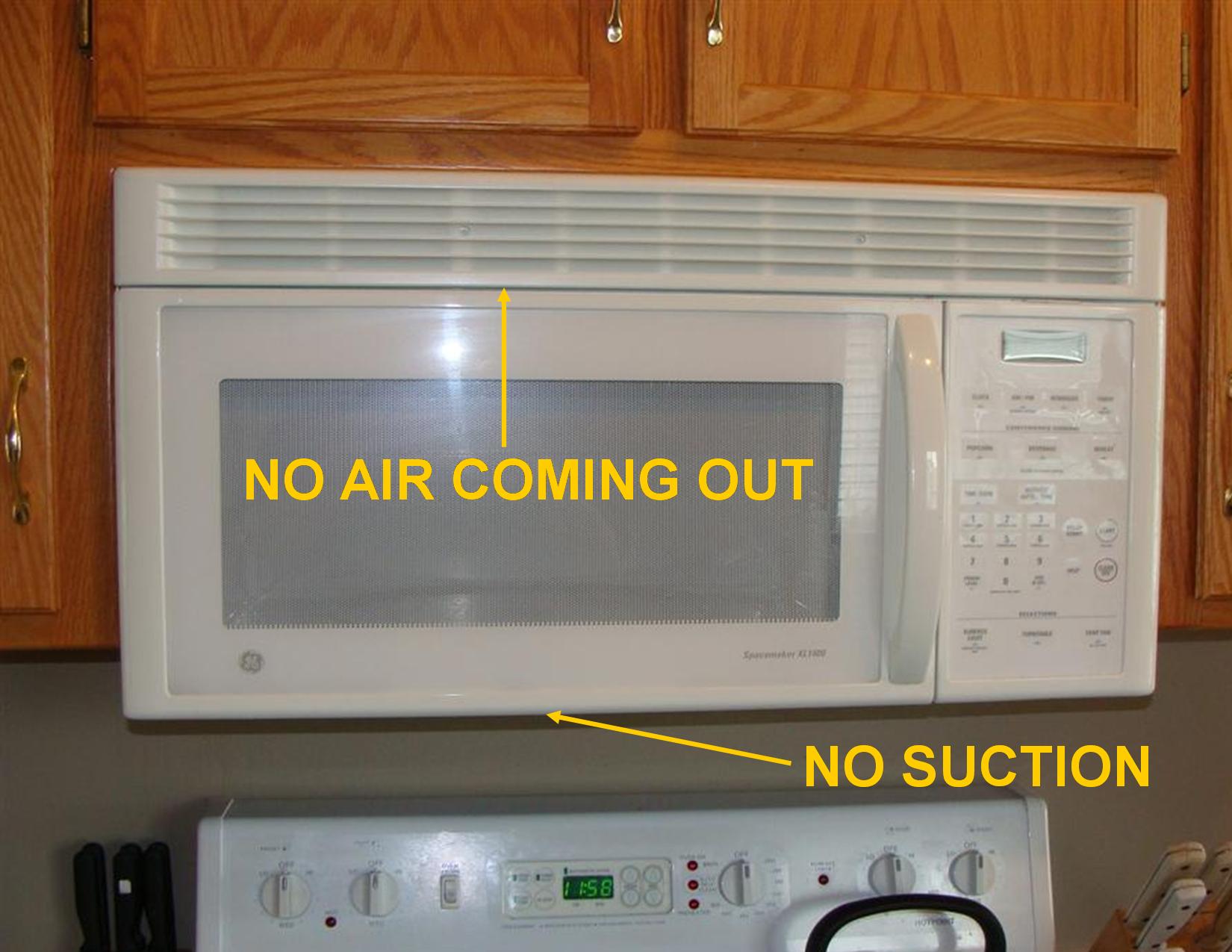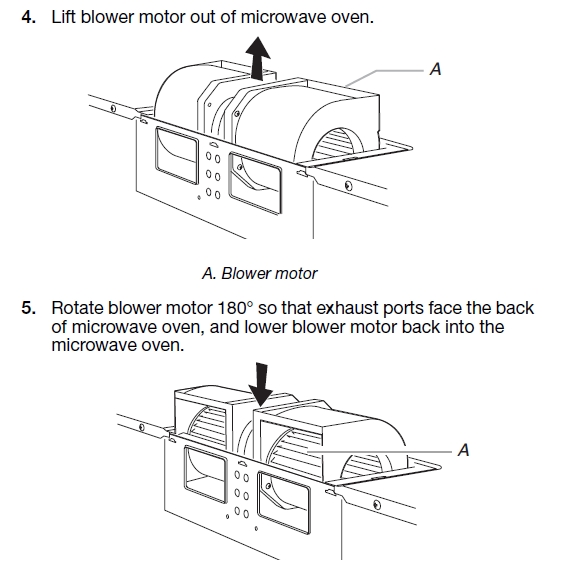I’m a big fan of range hoods that exhaust to the exterior, and I like them even more when they’re installed properly, but this doesn’t always happen. I find a lot of problems with range hoods when I inspect houses, and today I’ll review a few of the most common defects.
Backwards fans. By far, the most common installation defect that I find with over-the-range microwave / hood fans is a blower fan that’s installed backwards. Microwave fans are designed to exhaust out the back, exhaust out the top, or recirculate air out the front. Depending on how the fan is installed, the internal fan needs to be rotated to blow in the proper direction. The diagram below comes from an installation manual, and helps to illustrate this. I frequently find fans that are designed to re-circulate the air, or blow it out the front, but when I turn the fan on, it just makes a lot of noise. No air is coming in or out. The repair for this condition is to un-install the microwave, rotate the internal fan, then re-install the microwave.
Too powerful. One of the most powerful fans I’ve seen is a brand called San Yang Pai. These particular types of kitchen exhaust fans are just too powerful for most homes. The least powerful fan they make is rated at 650 cubic feet per minute (cfm), which is a ridiculous amount of air being removed from the house. Every time I’ve inspected a house with a hood fan made by this company, the fan has been so powerful that it caused the water heater to backdraft. The water heaters always function fine after I turn the hood fan off. The fix is to replace the fan or have additional make-up air brought into the home (or just not use the fan, but I never recommend that).
Improper duct. The standard for range hood exhausts is a 6″ rigid metal duct. Anything smaller will always violate the manufacturers installation instructions – as far as I know. I’ve never seen a manufacturer that allows anything smaller than 6″. The photo at right was taken at a condo conversion during a Minneapolis condo inspection. The builder had to replace the duct with the proper size, and I’m sure it wasn’t a fun project.
Improper wiring. Most hood fans come with a cord that needs to be plugged in to an outlet, or they have an opening in the cabinet so they can be hardwired. I see a lot of hood fans in Minneapolis and Saint Paul wired with lamp cords or extension cords, and this is never a proper installation.
Reuben Saltzman, Structure Tech Home Inspections – Email – Home Inspector Saint Paul




